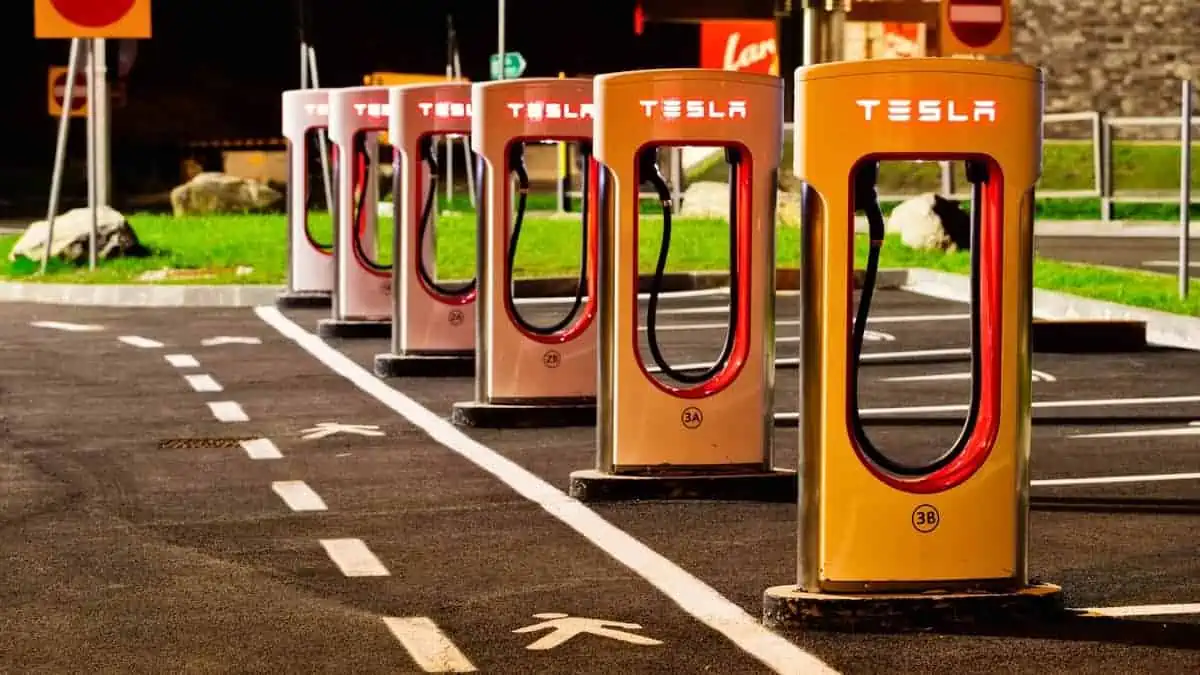The following are the top 20 interesting facts about electric vehicle charging infrastructure:
| Rank | Fact | Impact |
| 1 | Bidirectional charging for the win: V2G (Vehicle-to-Grid) technology allows EVs to not only charge, but also feed power back into the grid, promoting grid stability and potentially generating income for EV owners. | More than just charging, unlocks potential for EVs to act as grid assets. |
| 2 | Solar-powered charging on the rise: Stations harnessing the sun’s energy are becoming increasingly common, offering sustainable and eco-friendly charging. | Reduces reliance on fossil fuels and lowers carbon footprint of EV charging. |
| 3 | Second-life batteries get smarter: Used EV batteries are repurposed for various applications, from stationary energy storage to microgrids, extending their lifespan and promoting circular economy. | Minimizes waste and creates new opportunities for energy storage and distribution. |
| 4 | Charging goes green: Initiatives like carbon offset programs and partnerships with renewable energy providers allow users to choose sustainable charging options, reducing the environmental impact. | Empowers users to contribute to a greener future and promotes responsible charging practices. |
| 5 | Gamification motivates change: Apps and programs that reward users for sustainable charging make it more fun and engaging to contribute to a cleaner environment. | Increases user engagement and encourages adoption of eco-friendly charging habits. |
| 6 | Community hubs with a charge: Charging stations are integrated with public spaces like parks, cafes, and shopping centers, creating vibrant community hubs and enhancing the charging experience. | Promotes integration of EVs into daily life and offers additional amenities for users. |
| 7 | Subscription services offer flexibility: Pay-per-use or monthly subscription models provide convenient access to charging networks without upfront station ownership, catering to diverse needs. | Increases accessibility and affordability of EV charging, especially for occasional users. |
| 8 | Wireless charging trials expand: While not yet widespread, wireless charging trials are underway, offering the potential for a more seamless and convenient charging experience in the future. | May revolutionize charging convenience and eliminate cable clutter. |
| 9 | Rural areas get charged up: Initiatives bridge the gap in charging availability in underserved areas, making EVs a viable option for residents beyond urban centers. | Promotes equity in access to EV charging and contributes to a more inclusive transportation system. |
| 10 | Smart grids integrate EVs: EVs can be integrated as grid resources, optimizing energy use and contributing to grid stability through smart charging solutions. | Enhances grid flexibility and efficiency, paving the way for a more sustainable energy system. |
| 11 | Underwater charging expands: Dedicated stations cater to the needs of electric boats, promoting sustainable boating practices and reducing emissions on waterways. | Addresses unique needs of the maritime sector and contributes to cleaner water transportation. |
| 12 | Research & development fuels innovation: Ongoing research pushes boundaries in areas like faster charging methods, novel materials, and grid integration, shaping the future of charging infrastructure. | Ensures continuous advancements and improvements in charging technology and infrastructure. |
| 13 | Policy drives progress: Governments play a crucial role through grants, incentives, and regulations, supporting infrastructure development and accelerating EV adoption. | Creates a supportive environment for investment and fosters a thriving EV ecosystem. |
| 14 | Community collaboration: Working with local communities ensures infrastructure meets their needs and priorities, promoting acceptance and social equity. | Fosters inclusive planning and development of charging infrastructure. |
| 15 | Life-cycle assessment promotes sustainability: Evaluating the environmental impact throughout a station’s lifespan guides responsible development and operation. | Minimizes environmental footprint and ensures long-term sustainability. |
| 16 | Green jobs emerge: The development, maintenance, and operation of sustainable charging infrastructure creates new employment opportunities in the green economy. | Provides career paths and contributes to sustainable job creation. |
| 17 | Standardization ensures compatibility: Common connector types and communication protocols prevent compatibility issues and make charging seamless across different networks. | Enhances user experience and avoids confusion from diverse charging systems. |
| 18 | Data sharing empowers decisions: Open access to data on charging availability and usage allows for informed decision-making by users and developers. | Creates transparency and improves efficiency in planning and resource allocation. |
| 19 | Education is key to adoption: Raising awareness about the benefits of EVs and charging infrastructure encourages responsible usage and wider acceptance. | Combats misinformation and promotes informed choices for individuals and communities. |
| 20 | Charging goes beyond cars: Solutions are emerging for electric buses, trucks, micromobility vehicles, boats, and even construction equipment, electrifying various sectors. | Promotes a cleaner and more sustainable |






